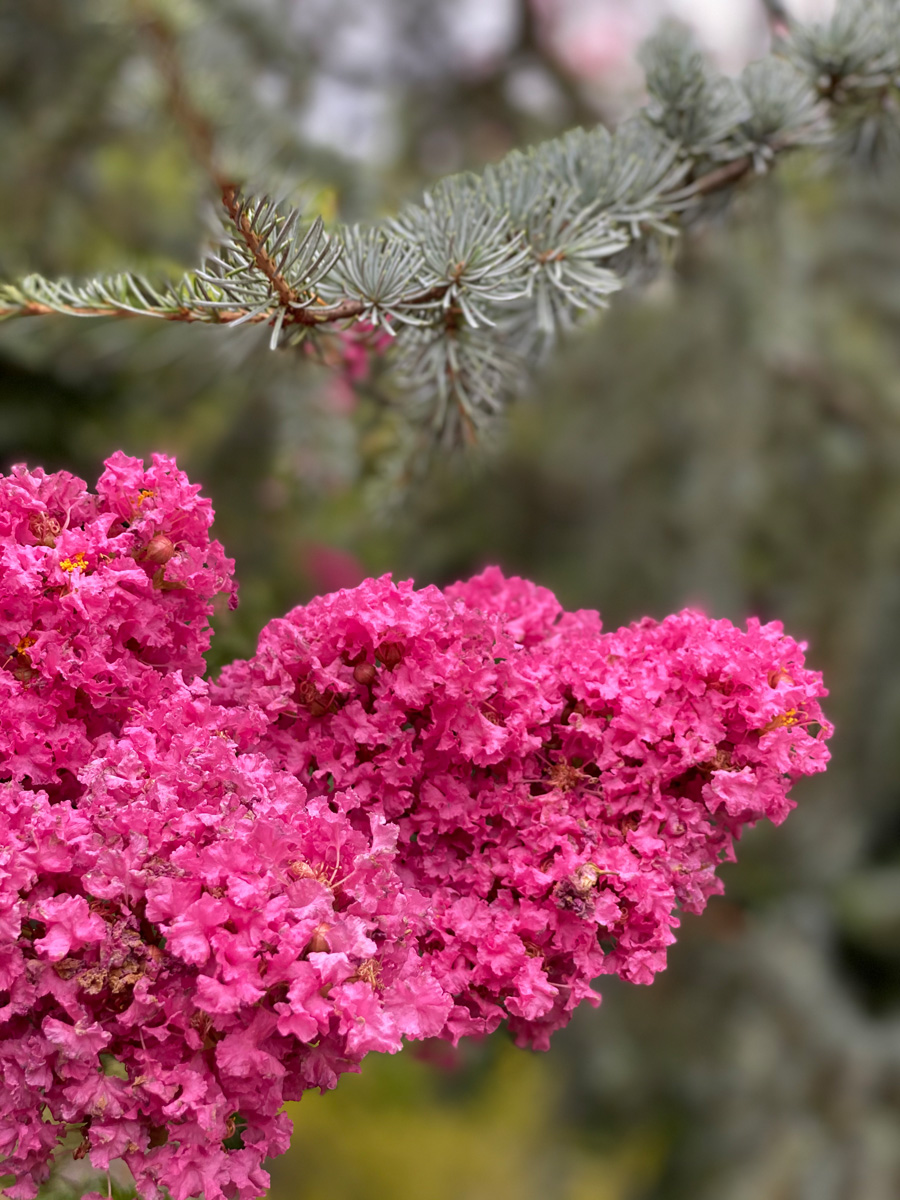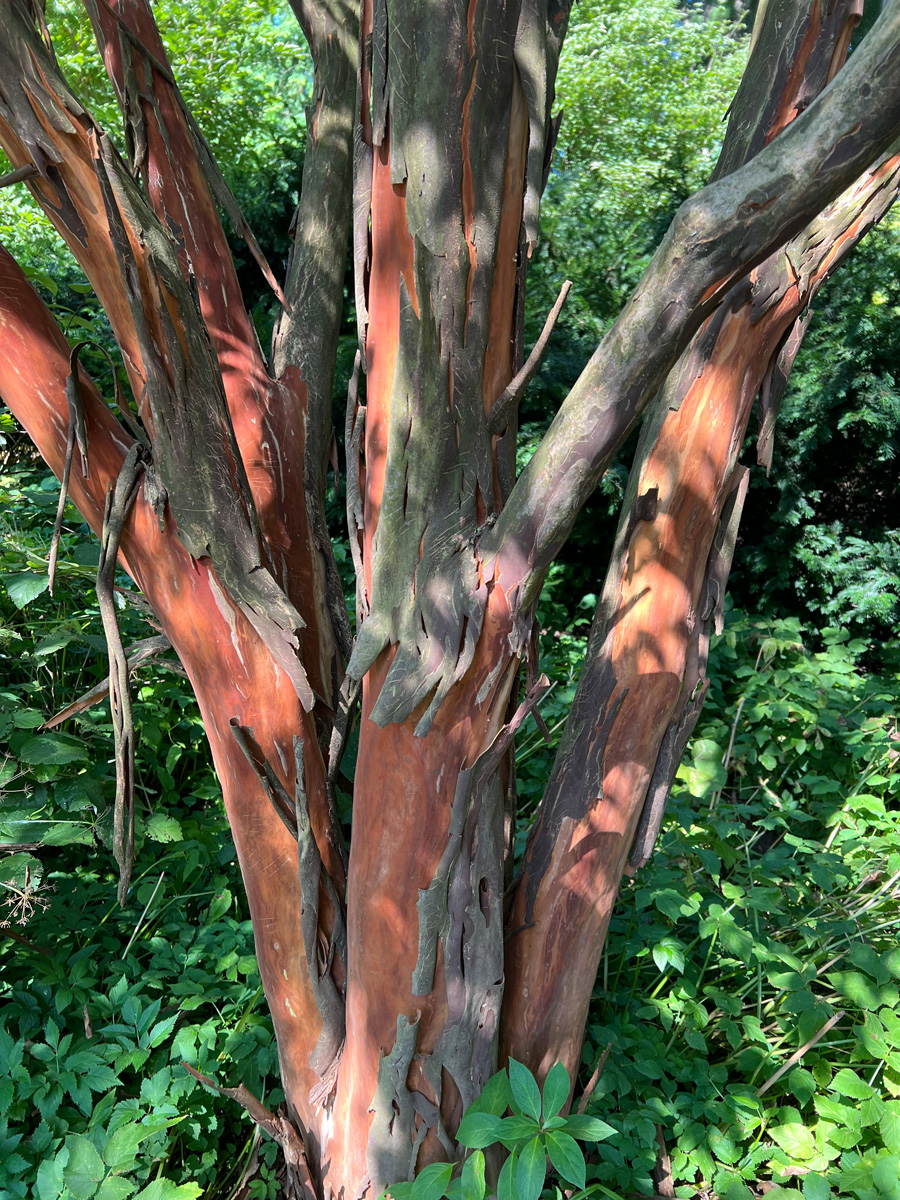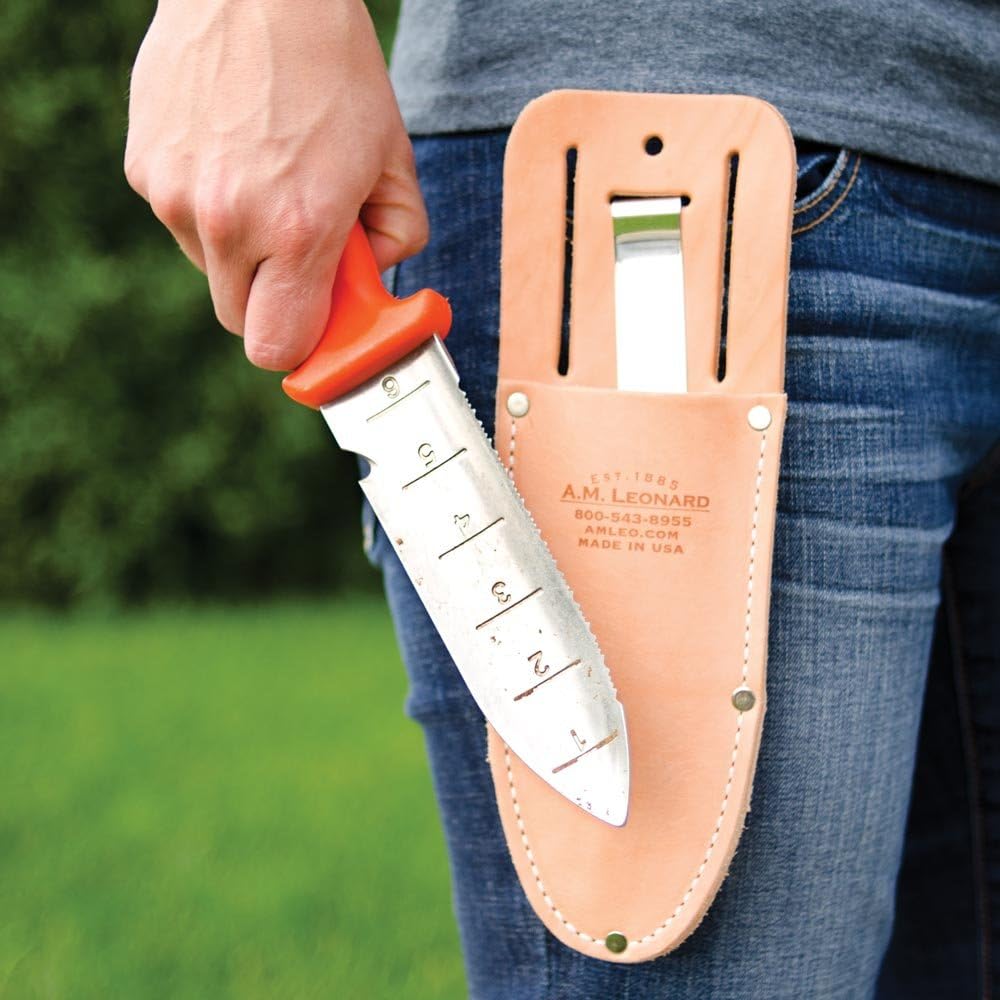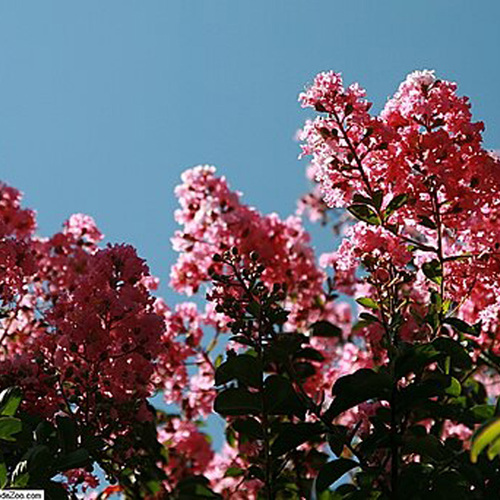Crape myrtles (Lagerstroemia spp. and cvs., Zones 6–10) are everywhere in the Southeast. Known for their long-lasting summer blooms, attractive bark, and tolerance to heat and drought, these versatile flowering trees and shrubs thrive in the Southeastern landscape and can be relatively easy to grow. Here are a few things to keep in mind when selecting your crape myrtle to help you cultivate it successfully.
Choosing a crape myrtle
While I certainly endorse shopping for plants at local stores, heading to a nursery or a big-box store with the idea that you want to buy any crape myrtle that catches your eye may not end well (for you or the plant). Modern breeding and hybridizing have brought us into an era where there are crape myrtles of all shapes, sizes, bark characteristics, and flower colors. There are selections that can almost act as ground covers, to those that grow 30 feet tall or taller. First, look at your site and find a cultivar whose ultimate height and width match your space.
Local nurseries, garden centers, and online plant retailers all carry crape myrtles. Again, do your research before shopping. Local independent garden centers in your area may also have advice on selections that have done well in your area.
Selecting for form and structure
Overall, these are fast growers. If you have dreams of a large crape myrtle with a form highlighting its wonderful exfoliating bark, look closely at the plant you are buying. Often, growers cram multiple individual plants into a container to help fill out the pot faster and then sell that container of plants. This is okay if you want a very shrubby look. However, if you are looking for more of a tree form, it would be better to find a single plant that is already trending that way from the start.
When and where to plant crape myrtles
The best time of year to plant a crape myrtle will depend on which selection you choose and where you live. If you are in USDA hardiness Zone 6 or 7, the best time is in spring when soil temperatures are warming. This will give plants the full growing season to establish. As you move into Zone 8 and above, you can be less selective with when you plant. To maximize flowering, choose a planting location with at least six hours of direct sunlight daily. Insufficient sunlight can lead to weak flowering and spindly growth. Always keep ultimate plant dimensions in mind; I often give plants even more room than what is noted as their final size. These plants are highly tolerant of poor soil but will perform best in rich soil with good drainage. If you have heavy clay soil, break it up as much as possible before planting.

When crape myrtles bloom, and why your plant might not be blooming
These plants bloom on the current season’s growth and typically bloom from mid to late summer, continuing through early fall. If yours isn’t blooming, potential causes may include overly aggressive or improper pruning, too much shade, or over-fertilization. Picking a suitable cultivar for your space and placing it in a sunny location can head off many of these problems.
Pests and diseases that affect crape myrtles
Although susceptible to a few common ailments, crape myrtles are fairly pest resistant. Regularly monitoring your plants and seeking solutions to problems early is always advisable. Some of the most common issues that crop up on crape myrtles are:
- Powdery mildew: A common fungal issue in humid climates, best prevented with good air circulation.
- Sooty mold: This is a fungus that covers the leaves and looks like black goo. This is caused by a variety of pests (particularly aphids) that excrete a sticky substance called honeydew, which leads to the mold.
- Crape myrtle bark scale: This is an invasive insect that has a similar look to mealybugs. These insects can be found clustered in branch crotches, in pruning sites, and on bark. This is a more recent pest that causes even more black sooty mold than the previously mentioned fungus does and weakens plants over time. Crape myrtle bark scale is a serious pest, and it is best to do further research and see how much of a problem it is in your area, as it is not equally prevalent everywhere in the Southeast.
Crape Myrtle Q&A
When discussing how to grow these plants, I’m often asked the same questions repeatedly by interested gardeners. Here are answers to some of the more common questions people have on how to grow crape myrtles.
Are crape myrtles deer resistant?
Crape myrtles are generally deer resistant, though deer may browse young growth occasionally.
Can crape myrtles be grown in pots?
Yes, dwarf and smaller varieties of crape myrtle can thrive in large containers. Potted crape myrtles require more frequent watering, especially in hot weather, and may need occasional root pruning if they become rootbound.
Where are crape myrtles from, and are they invasive?
While there are around fifty species in the genus Lagerstroemia, most crape myrtles we see for sale in the nursery trade are native to Asia. Crape myrtles are not considered invasive in most locations, but they can produce stray seedlings from time to time in cultivation, though this is typically not a major concern.
Are crape myrtles toxic to animals?
Crape myrtles are considered nontoxic to humans, dogs, cats, and horses, making them a safe choice for gardens frequented by pets and children.
Are crape myrtles drought resistant?
Once established, crape myrtles are drought tolerant but benefit from deep watering during extended dry spells.
Is it okay to top crape myrtles when pruning?
Topping involves cutting back the main branches severely. This practice also makes the tree more susceptible to pests, diseases, and structural issues. Instead of topping, use proper pruning techniques to maintain healthy growth, encourage abundant blooms, and preserve the tree’s graceful form while still controlling its ultimate size.

A mature crape myrtle with exfoliating bark topped with cascading blooms is one of the classic archetypes of the Southeastern landscape. They are a fantastic choice for gardeners seeking year-round interest with minimal maintenance. Their striking blooms, attractive bark, and resilience to heat and drought make them a staple go-to plant. By carefully selecting the right cultivar and following proper care practices, you will have a plant you can enjoy for years to come. Don’t forget to regularly monitor for pests and diseases to keep plants healthy and increase their longevity. With thoughtful planning and care, your plants will thrive.
Discuss this article or ask other gardening questions to the author on the Gardening Answers forum. And for more Southeast regional reports, click here.
Andy Pulte is a faculty member in the plant sciences department at the University of Tennessee.
Photos, if not otherwise noted: Andy Pulte
Fine Gardening Recommended Products

A.M. Leonard Deluxe Soil Knife & Leather Sheath Combo
Fine Gardening receives a commission for items purchased through links on this site, including Amazon Associates and other affiliate advertising programs.
MULTITASKING DUAL EDGES: a deep serrated edge and a tapered slicing edge ideal for tough or delicate cuts. DURABLE 6-inch stainless steel blade withstands 300 lbs of pressure. TWINE CUTTING NOTCH, DEPTH GAUGE MARKINGS & spear point – no need to switch tools when using this garden knife. LEATHER SHEATH: heavy duty, protective, clip on sheath to keep your knife convenient and secure. LIFETIME WARRANTY.

